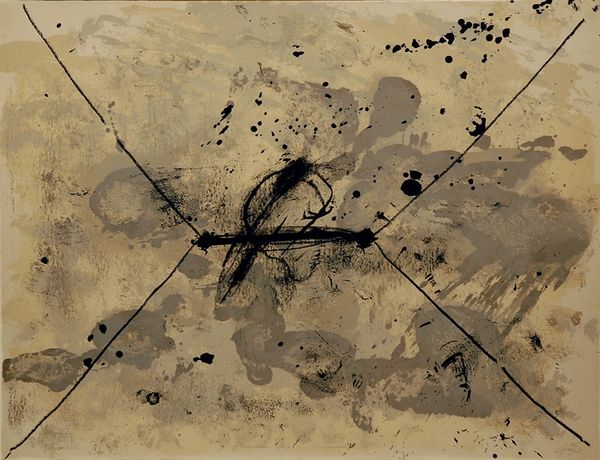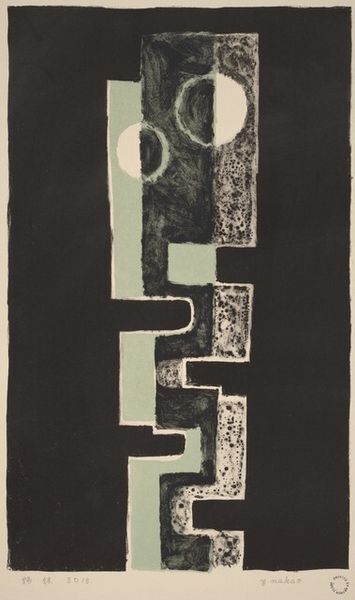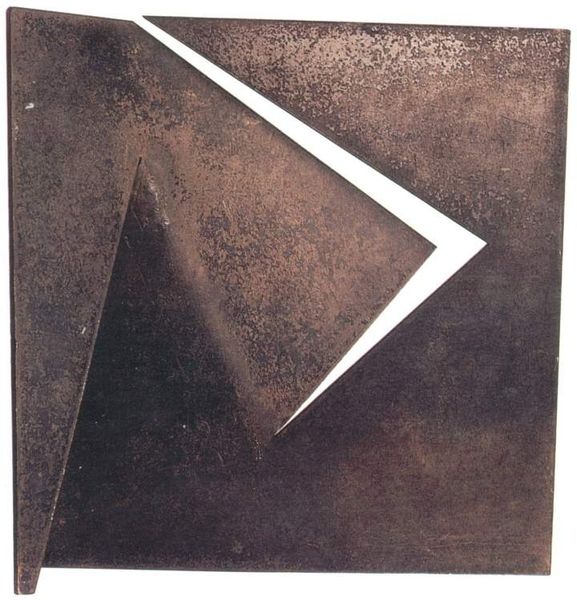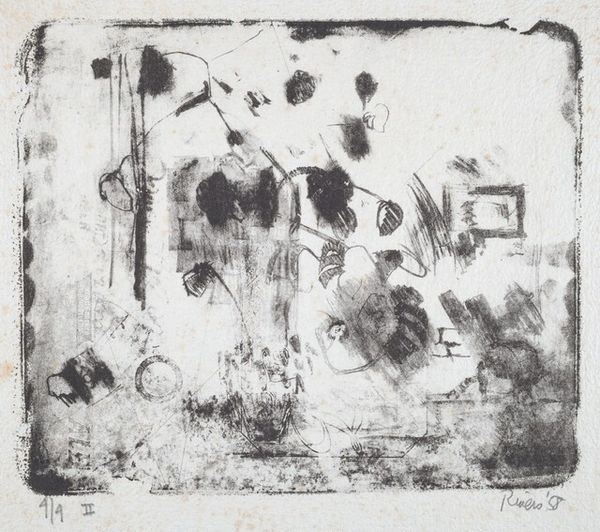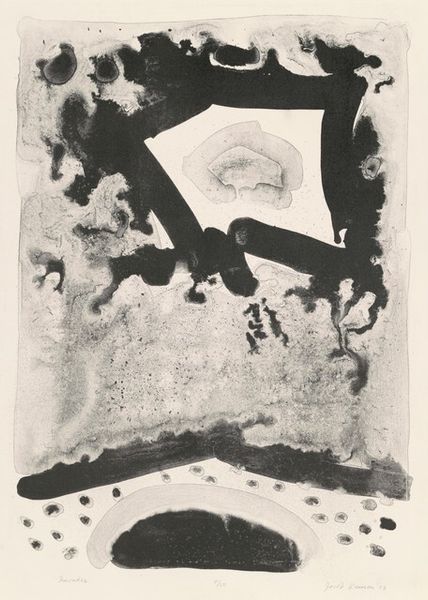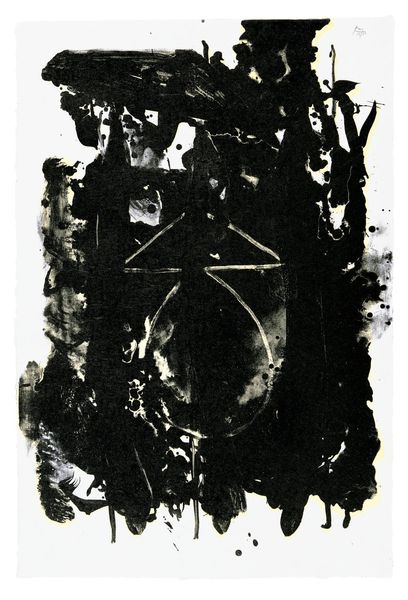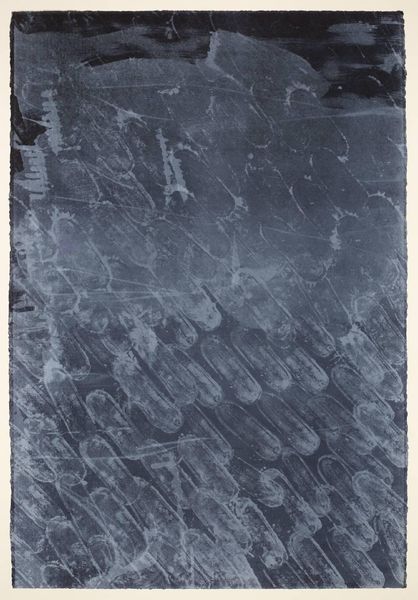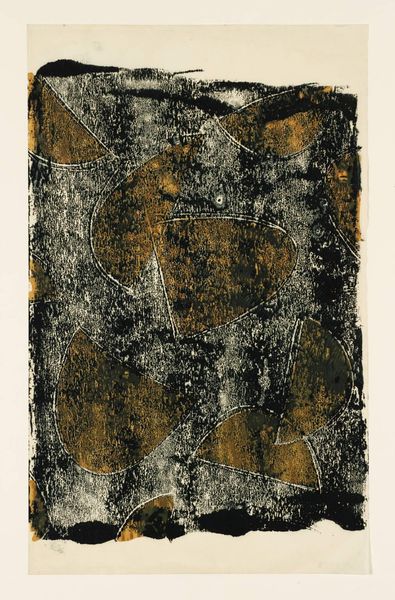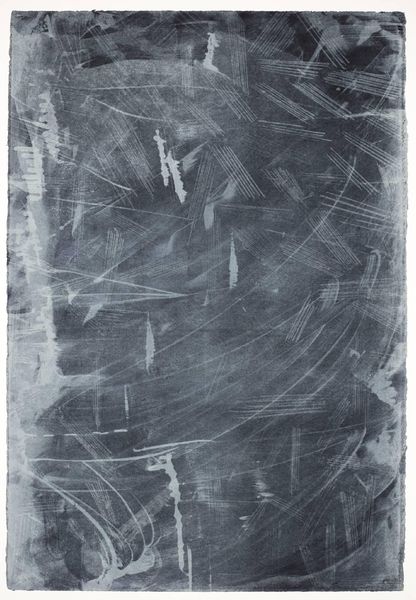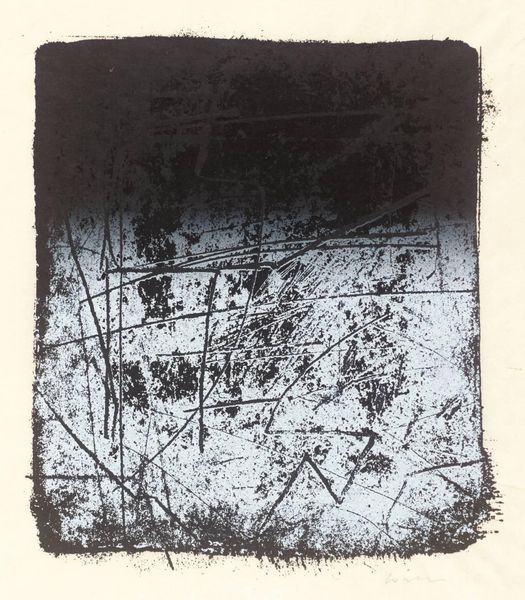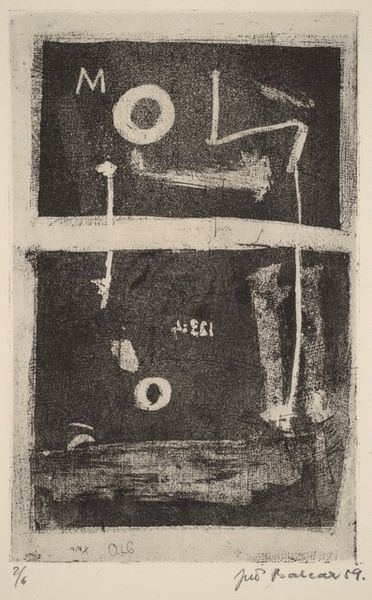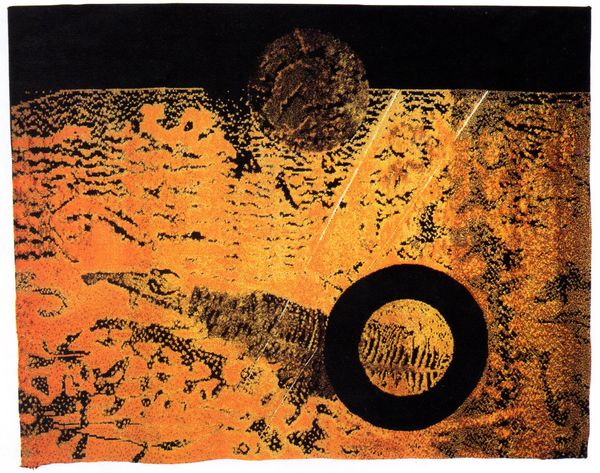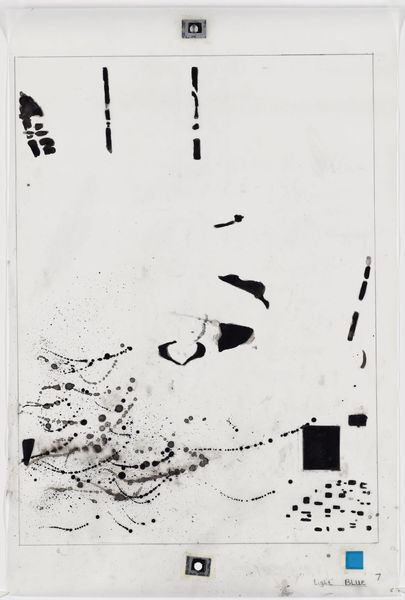
painting
#
abstract-expressionism
#
painting
#
hand painted
#
form
#
matter-painting
#
abstraction
#
line
#
watercolor
Copyright: Adolph Gottlieb,Fair Use
Editor: Here we have Adolph Gottlieb’s "Figure Eight" from 1967, a painting with strong, dark shapes against a textured gray background. I'm immediately struck by the contrast, but I’m unsure what to make of these seemingly random forms. What’s your take on this work? Curator: The apparent randomness is deceptive. Consider Gottlieb’s historical context; Abstract Expressionism emerged post-World War II, marked by anxieties surrounding the human condition and a desire to find new visual languages to articulate it. He sought to represent primal experiences through abstract signs. How does knowing that influence your reading of these “random forms?” Editor: I guess it gives them a weightier feel. The "figure eight," especially, almost feels like a symbol, like infinity… or an embrace? Curator: Precisely! Gottlieb was interested in Jungian archetypes and the idea of a collective unconscious. These aren’t just shapes; they're symbolic gestures laden with psychological and social meaning. We have the lower chaotic space full of gestures versus the celestial calm above it, representing the different dualities in human experience. He often explored these contrasts. Do you feel that push and pull in this painting? Editor: Absolutely. Now that you point it out, the placement of the forms creates a very definite separation between the top and bottom halves. Like a world of thought, above and below. I would never have considered that myself. Thanks so much. Curator: Of course. What this painting reminds us is to look deeper. Artists frequently embed their lived experience, reactions and belief systems into their works. Art, at the end of the day, is just another form of protest and expression.
Comments
No comments
Be the first to comment and join the conversation on the ultimate creative platform.
